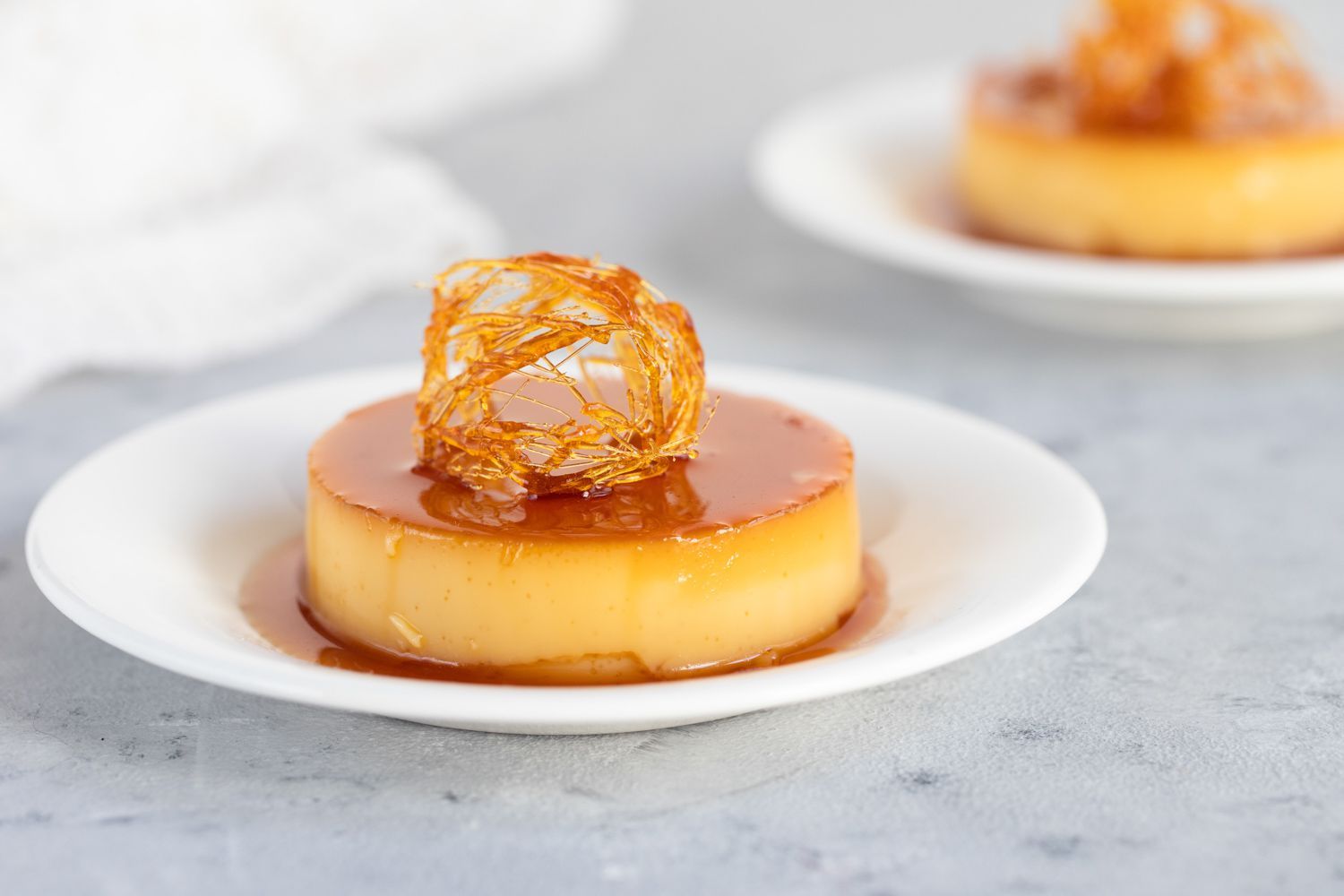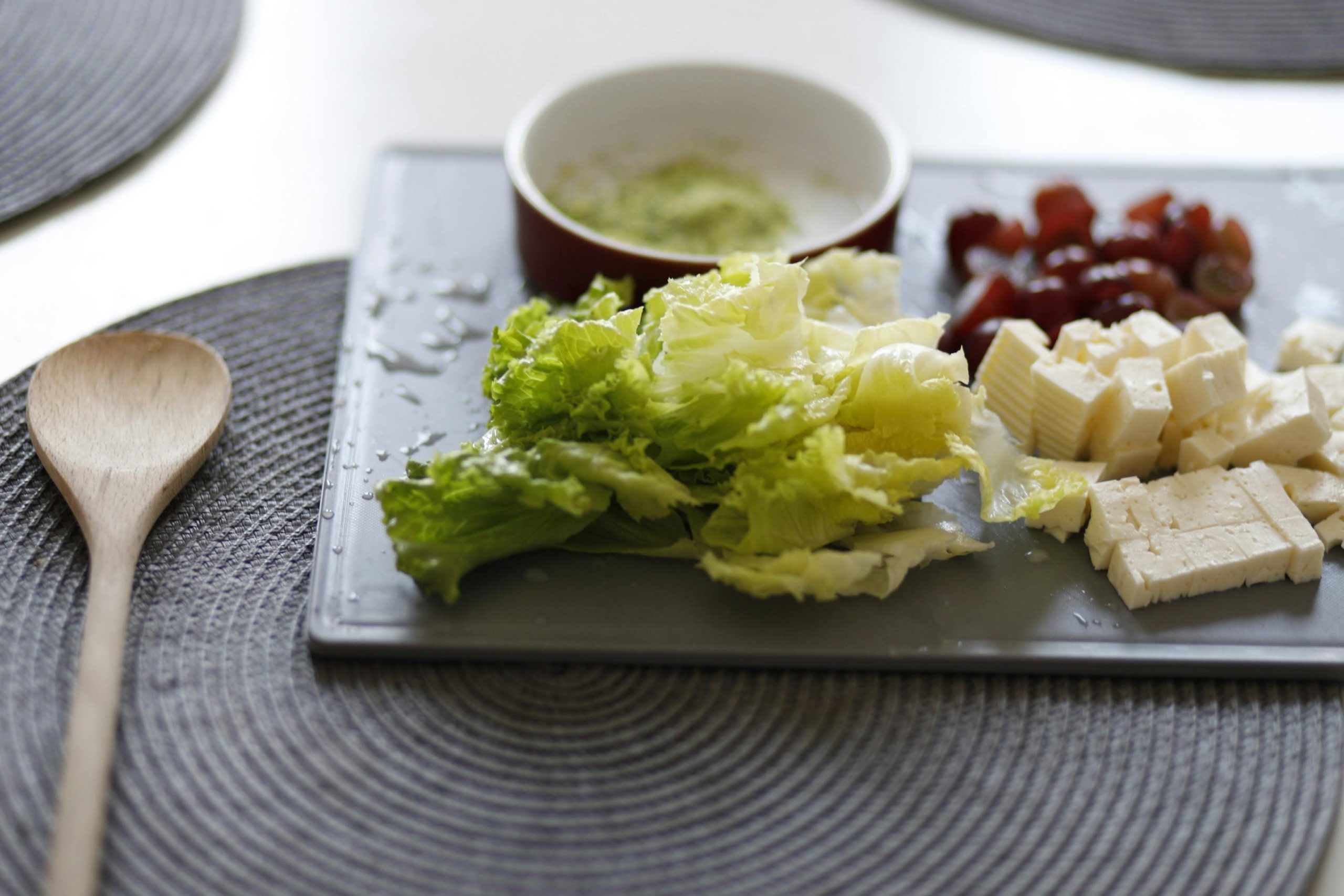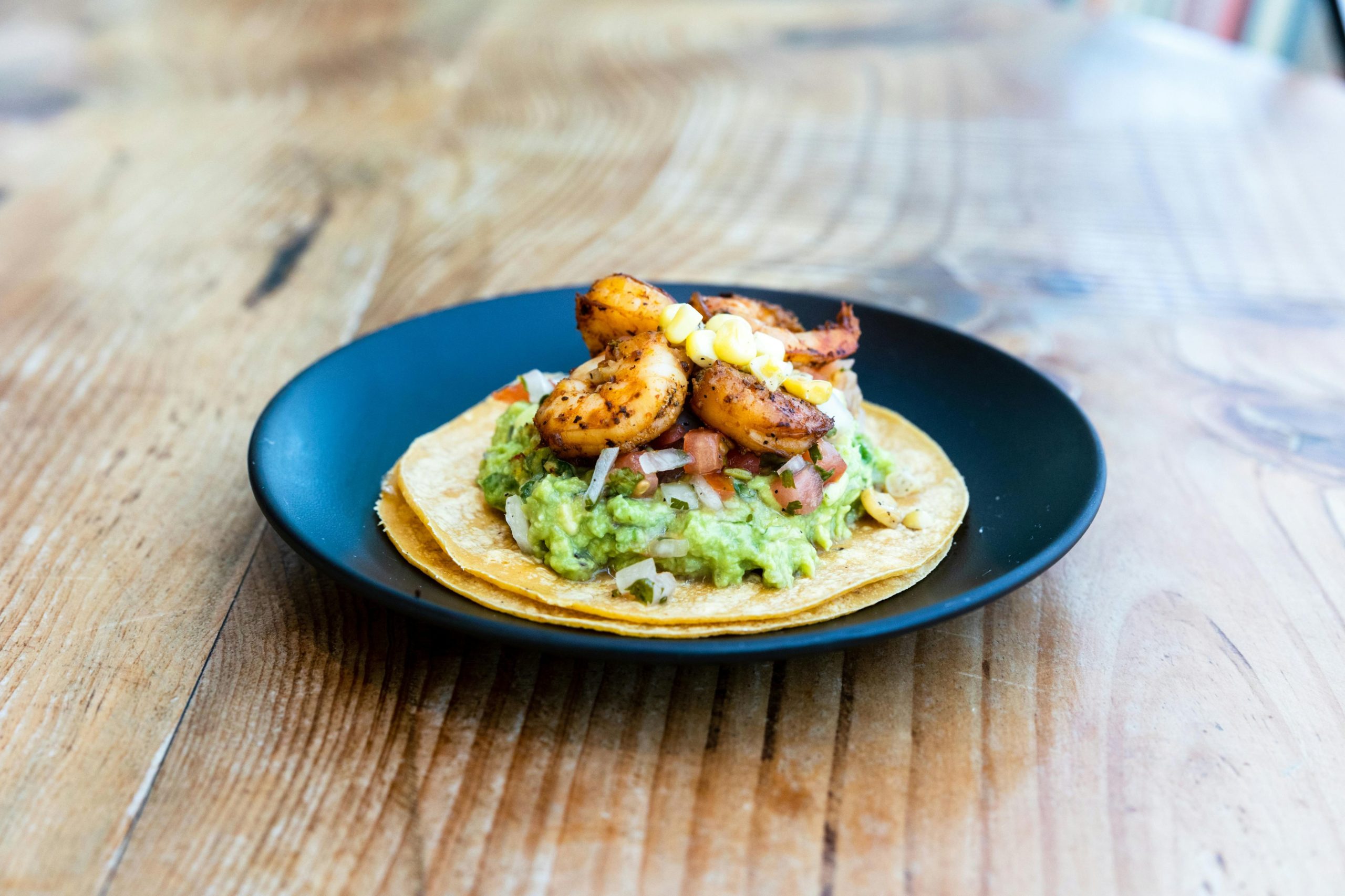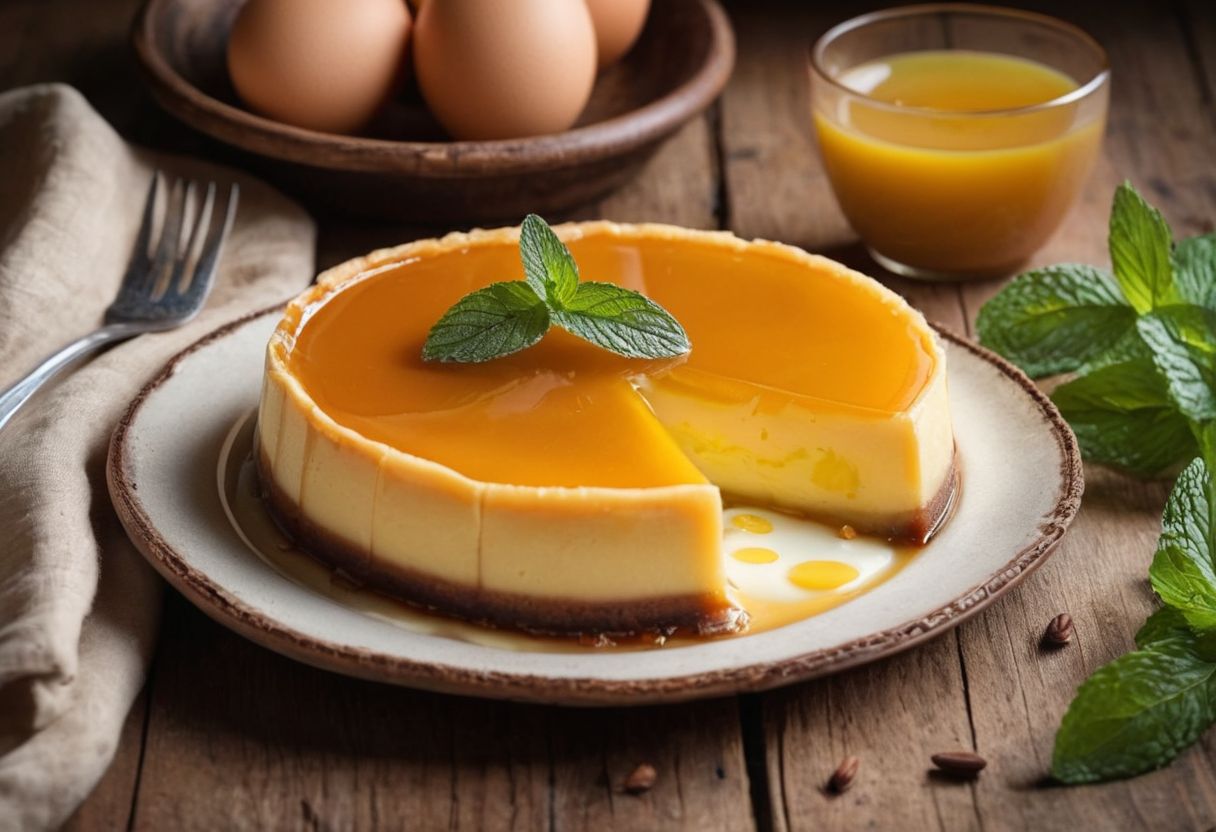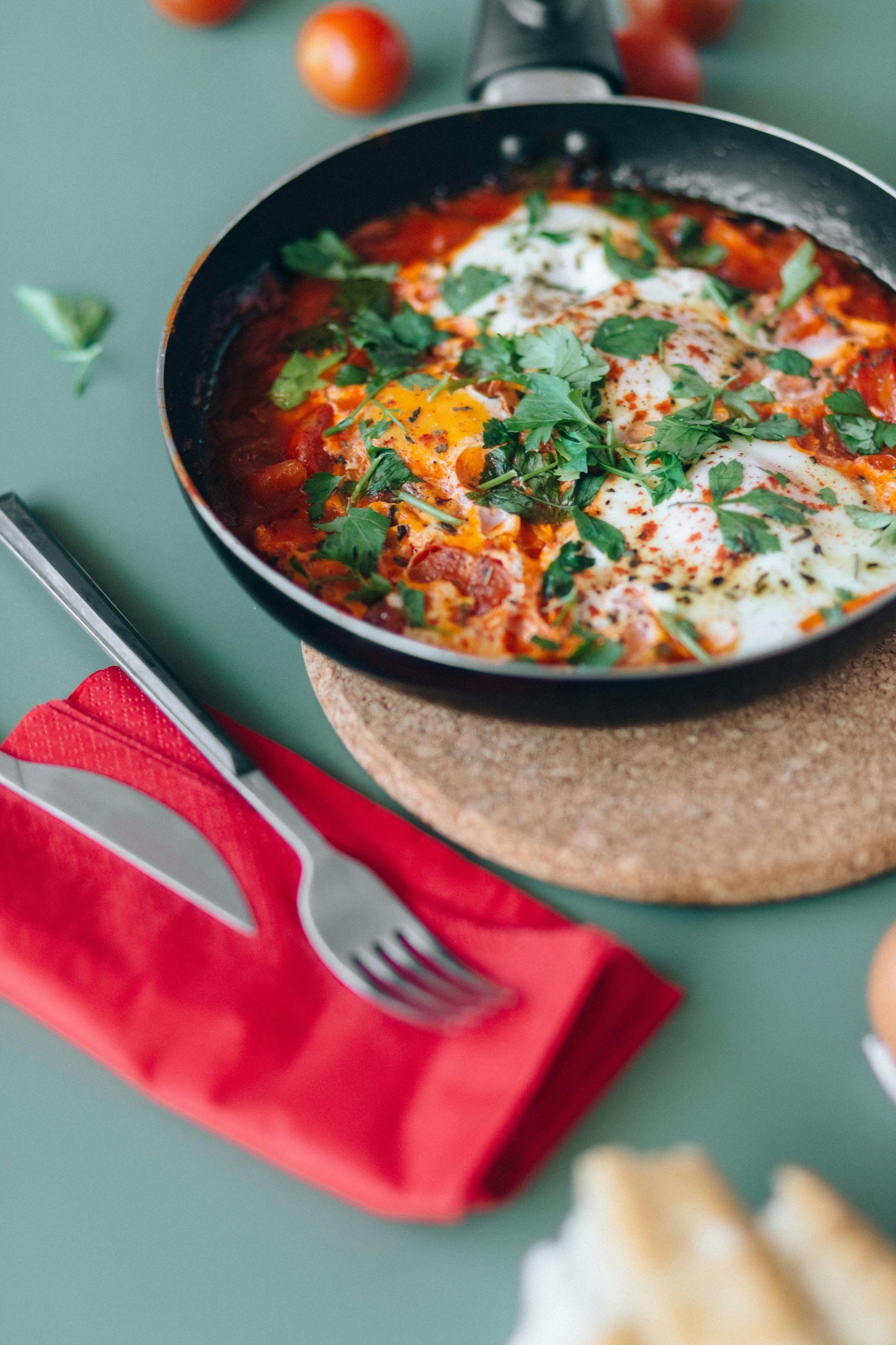Ever wondered what makes flan pudding so irresistibly smooth and delicious?
Many find the process of making flan intimidating, especially when it comes to achieving that perfect caramel and custard texture.
Flan pudding is a creamy dessert made by combining caramel and a custard base, typically baked in a water bath to achieve its signature silky texture.
In this comprehensive guide, we’ll explore everything from the basic ingredients and steps to make traditional flan pudding to the various regional variations and professional tips for perfecting this classic dessert.
What is Flan Pudding? Understanding the Basics

Flan pudding, also known as crème caramel, is a beloved dessert enjoyed by people all over the world for its smooth, creamy texture and rich flavor. At its core, flan is a custard that combines simple ingredients like eggs, milk, and sugar, which are gently baked to achieve a soft, silky consistency. This custard is then topped with a layer of golden caramel sauce that not only adds a delightful sweetness but also a beautiful glossy finish that makes flan visually appealing.
The allure of flan pudding lies in its elegant simplicity and the perfect balance of texture and taste. The custard’s creamy texture contrasts wonderfully with the liquid caramel topping, creating a dessert that’s not only tasty but also satisfying to eat. This combination of flavors and textures is why flan has become a staple dessert in many cultures, earning its place on dinner tables during festive occasions and everyday meals alike.
Key Ingredients for Crafting the Perfect Flan Pudding

Crafting the perfect flan pudding starts with understanding the key ingredients that make up its delectable structure. At the heart of any flan recipe are milk products such as sweetened condensed milk and evaporated milk, which provide the custard with its rich, creamy texture. Eggs are crucial as they help thicken the mixture, giving it the firm yet silky consistency that flan is known for. The addition of vanilla extract enhances the flavor, infusing the custard with a warm, aromatic essence that complements the sweetness of the milks.
The caramel layer, which forms the iconic topping of the flan, requires granulated sugar and water. This mixture is carefully heated until it achieves a golden amber color, creating a deliciously sweet and slightly bitter contrast to the creamy custard below. To balance out the flavors and ensure the custard sets correctly, a pinch of salt is added to the custard mixture. These ingredients, when combined with precision and care, are what make flan pudding a beloved dessert across various cultures.
Mastering Caramel for Flan Pudding
Mastering the caramel for flan pudding is all about timing and temperature control. Start by dissolving 1 cup of sugar with a bit of water in a saucepan over medium heat. It’s crucial to constantly stir the sugar until it browns and turns into caramel. Be vigilant—if the caramel is undercooked, it will be too sweet and lack depth, while burning it can introduce a bitter flavor. Once the caramel reaches a deep amber color, quickly pour it into your baking dish, swirling to coat the bottom evenly before it hardens. This layer will eventually become the top, signature syrupy glaze of your flan.
Step-by-Step Flan Pudding Preparation Guide
To begin making flan pudding, first, prepare your caramel as described previously and set your oven to preheat at 350°F. Next, focus on the custard mixture. In a blender, combine 4 large eggs, 2 additional egg yolks for richness, a can of sweetened condensed milk, and a can of evaporated milk. Add 1 teaspoon of vanilla extract and a 1/2 teaspoon of salt, then blend these ingredients until smooth to ensure a uniform texture without overmixing to avoid incorporating too much air.
Pour the custard mixture over the set caramel in your baking dish. Place this dish in a larger baking pan and fill the pan with hot water, about halfway up the sides of the flan dish. This method, known as a bain-marie, ensures even cooking and prevents the edges from cooking too quickly. Bake the flan for about 50 to 70 minutes or until just set. It should still jiggle slightly when shaken. Let the flan cool in the oven before chilling in the refrigerator, which makes it easier to handle and enhances its flavor.
Crafting the Perfect Custard for Flan Pudding
The secret to a velvety custard in flan pudding lies in the meticulous mixing and handling of the custard ingredients. Start by blending the eggs, sweetened condensed milk, and evaporated milk at a low speed to minimize air bubbles, which can affect the smoothness of your flan. A pinch of salt and generous teaspoon of vanilla extract are added to enhance flavor and balance sweetness. For an ultra-smooth texture, strain the mixture through a sieve to remove any egg particles or bubbles. This careful preparation ensures a custard that is creamy and decadent, forming the perfect base for your flan pudding.
Regional Varieties of Flan Pudding Around the World
Flan pudding, while rooted in simplicity, exhibits a delightful diversity in its regional variations. In Mexico, the flan is often infused with local flavors such as cinnamon and orange, creating a vibrant twist on the traditional recipe. Moving to the Dominican Republic, their version, known as flan de coco, incorporates creamy coconut milk, offering a tropical richness that sets it apart. These regional adaptations not only highlight local tastes but also demonstrate the versatility of flan as a dessert.
Other countries have put their unique spins on this classic dessert as well. In Spain, where flan is considered a national dessert, it’s commonly served plain with a smooth, jelly-like texture or sometimes paired with a touch of lemon zest for a subtle citrusy undertone. Across the ocean in the Philippines, flan takes a denser form known as leche flan, which is notably sweeter due to the use of condensed milk. Each regional variety of flan not only offers a glimpse into the culinary preferences of the area but also enriches the global tapestry of dessert culture.
The Fascinating History of Flan Pudding
Flan pudding’s journey begins in the ancient Roman Empire, where it was originally a savory dish made from eggs and fish or meat, known as ‘tyropatinam’. Over time, the Romans began sweetening these custards with honey, transforming them into the dessert we recognize today. This culinary innovation spread across Europe, being embraced and adapted by various cultures.
By the time flan reached Spain, it underwent significant transformation, including the pivotal addition of caramelized sugar. This gave birth to the classic sweet flan that is beloved in many Spanish-speaking countries. As Spanish explorers traveled to the Americas, they brought flan with them, where it was warmly received and incorporated into local cuisines, evolving further with regional ingredients and flavors.
Etymology and Global Journey of Flan
The word “flan” originates from the Latin term “flado,” which means “flat cake,” reflecting its early forms in Roman cuisine. As the Roman Empire expanded, so did the popularity of this dish, spreading across Europe and undergoing various adaptations. By the Middle Ages, the term had evolved into the Old French “flaon,” and into “flan” in modern French, signifying its transformation from a savory meal to the sweet custard dessert we know today. The global journey of flan is marked by its adaptability:
- In Spain, the addition of caramelized sugar revolutionized the recipe, creating the classic sweet flan.
- Across the Atlantic, flan became a beloved dessert in Latin America, each country adding its unique twist, like Mexico’s “flan de cajeta.”
- In the Philippines, a denser version known as “leche flan” is a testament to further local adaptation, emphasizing the dessert’s worldwide appeal and versatility.
Pro Tips for Perfecting Your Flan Pudding
To achieve a flawless flan pudding, consider these tips: First, ensure your eggs are at room temperature to avoid a grainy texture. Gently warm your milk before blending it with the eggs, which helps the sugar dissolve more effectively and prevents the eggs from coagulating too quickly when cooked.
When baking, cover your flan with foil to prevent the top from browning too quickly, and always use a water bath to promote even cooking. Here are some additional pointers:
- Avoid opening the oven frequently as it can cause sudden temperature changes affecting the custard’s texture.
- After baking, let the flan cool gradually in the oven with the door slightly ajar to prevent the surface from cracking.
Make-Ahead Strategies for Flan Pudding
If you’re planning to prepare flan pudding ahead of time, it’s essential to focus on methods that maintain its quality and taste. Flan can be made up to two days in advance, which allows the flavors to meld beautifully. After baking and cooling the flan, cover it loosely with plastic wrap to prevent it from absorbing any fridge odors. For best results, keep the flan in its baking dish submerged in the caramel; this not only enhances the flavor but also keeps the custard moist. When ready to serve, simply run a knife around the edges of the flan, and invert it onto a plate. The make-ahead approach is perfect for managing time and reducing stress when prepping for special occasions or large gatherings.
Discover Flan Pudding on a Culinary Adventure with Indulge
Flan pudding, a creamy and smooth dessert, is a culinary delight that many enjoy worldwide. By joining a food tour with INDULGE, you can elevate your appreciation for this dessert. INDULGE offers curated culinary tours in Zurich, where flan pudding and other international cuisines are explored in depth. These tours are led by local experts, including chefs and sommeliers, who provide valuable insights into the ingredients and techniques used in making perfect flan pudding.
Participating in an INDULGE food tour not only broadens your culinary knowledge but also allows you to experience the rich cultural and historical context behind dishes like flan pudding. Here’s what you can expect on such a tour:
- A deep dive into Zurich’s culinary history with a focus on international desserts.
- Exclusive tasting sessions that include flan pudding among other local and international specialties.
- Engaging stories and facts shared by expert guides about the evolution of flan pudding and its variations across different cultures.
Frequently Asked Questions
Is pudding and flan the same thing?
Flan, also known as crème caramel, is a specific type of pudding known for its caramel topping and custard base. While both flan and pudding are dessert categories involving creamy textures, flan is distinct because of its caramel layer and the method of preparation which often involves baking in a water bath to achieve its signature silky texture.
What is a flan made of?
Flan is made from a custard base that typically includes eggs, milk, and sugar. This custard is topped with a layer of caramel, made from granulated sugar and water. The custard may also include other ingredients like vanilla extract and a pinch of salt to enhance the flavor and texture.
Is flan a Mexican or Spanish dessert?
Flan originated from the Roman Empire and was transformed into the sweet custard dessert with caramelized sugar in Spain. It is considered a national dessert in Spain. However, flan was brought to Mexico by Spanish explorers and has become a beloved dessert there as well, with local variations such as flan de cajeta. Therefore, flan is both a traditional Spanish and a popular Mexican dessert.
Is Japanese custard pudding the same as flan?
Japanese custard pudding, often referred to as “purin”, is similar to flan in its use of eggs, milk, and sugar to create a custard base with a caramel topping. However, there may be slight differences in texture and sweetness levels. While they are similar, each has unique characteristics influenced by regional culinary preferences.

